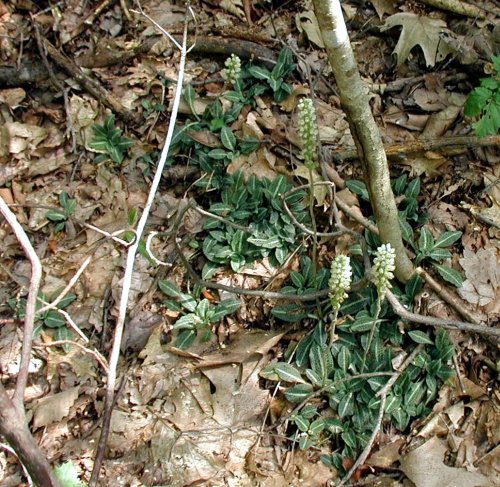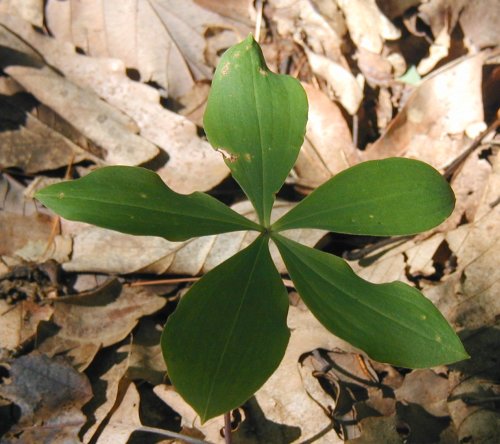For three years now I have been spying on a special plant, just waiting for it to flower. We’re fortunate enough to have three members of the orchid family, Orchidaceae, on our property here in Central Pennsylvania.
Pink Lady’s Slipper, Cypripedium acaule, and Downy Rattlesnake Plantain, Goodyera pubescens, have already flowered this year. The Pink Lady’s Slipper, or Moccasin flower, blooms around Mother’s Day and the Downy Rattlesnake Plantain blooms in late Summer, around now.
I found a new colony of the Downy Rattlesnake Plantain yesterday near a stand of hemlock trees with four plants blooming and a large number of plants that almost formed a mat.

Downy Rattlesnake Plantain colony on the ridge near the hemlock grove. Photo taken 13 August 2008.
Our third orchid is a whorled pogonia, Isotria species, and we have yet to see it bloom. Since the greenery comes up each year, it may be Whorled Pogonia, Isotria verticillata, but I can’t rule out the endangered Small Whorled Pogonia, Isotria medeoloides, until the blossoms are visible.

Oval-shaped pogonia leaves join at their bases, each having a pointed tip. Photo taken 10 July 2008.
There are two pogonias in one location and a colony of 12-15 of them in a second location on the ridge.
Pogonias hide amongst the gaywings on the forest floor. Gaywings or Fringed Polygala, Polygala paucifolia, have a similar appearance of about five leaves joined at their bases, but if you look closely you will see vein branching in the leaves and short leaf stems. Pogonias, being orchids and therefore, monocots, have leaf veins that are parallel and no apparent leaf stem. Gaywings are dicots and have branching leaf veins.

Fringed polygala on the forest floor. Photo taken 29 July 2008.
Gaywing leaves are sturdy with an almost waxy feel. Pogonia leaves feel more delicate. Bugs do not seem to consume either of them very much.
As far as medicinal properties go, neither gaywings or any of these orchids have medicinal properties that are worth sacrificing the plants.